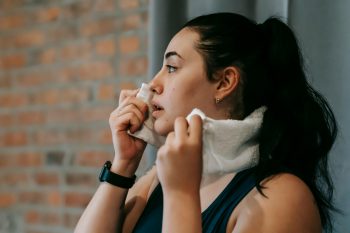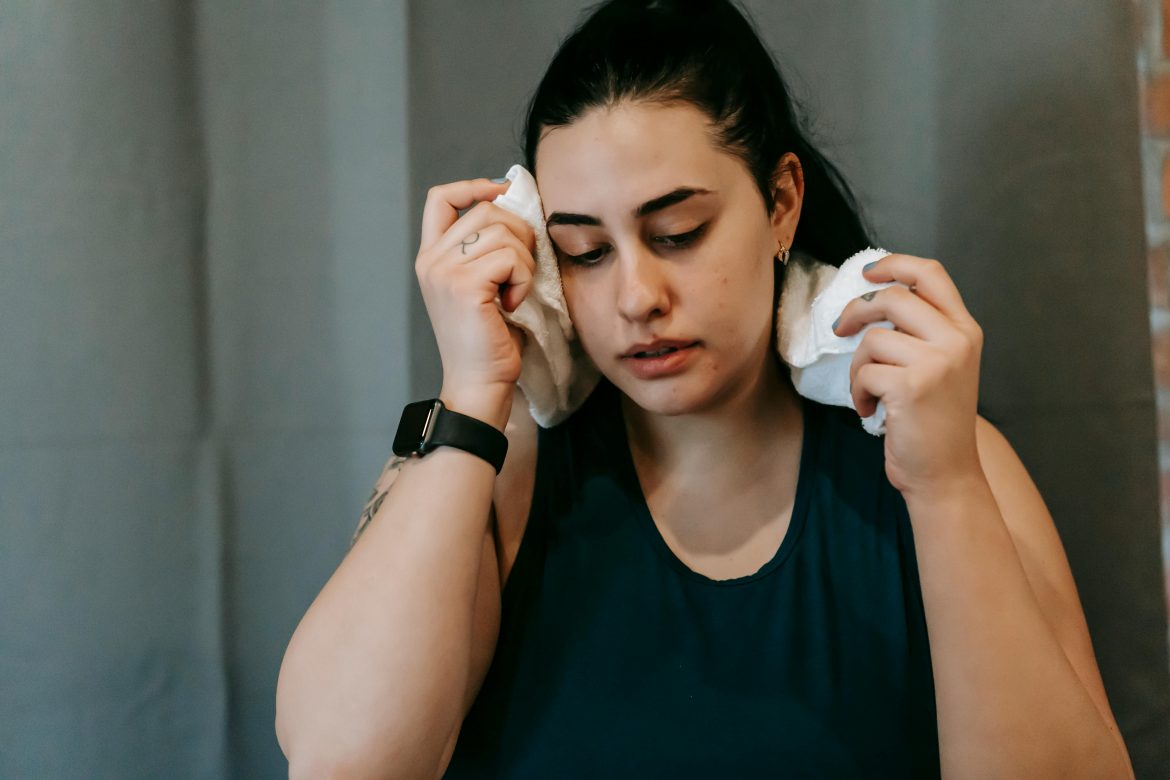Sweating is a natural process that helps regulate our body temperature. But, for some, excessive sweating can be a daily challenge. Understanding what causes this condition and how to manage it can make a significant difference.
Knowing what counts as excessive sweating and how to manage it can help you gain a better understanding of your health. So, let’s dive in.

Pexels
ALSO SEE: Could allergies be the cause of an itchy scalp?
What is excessive sweating?
Excessive sweating, also known as hyperhidrosis, is a condition where a person sweats more than necessary to cool the body. This can affect various parts of the body, including the palms, feet, underarms, and face. While sweating is normal during exercise or hot weather, those with hyperhidrosis may sweat excessively even in cool temperatures or without physical exertion.
Common causes of excessive sweating
1. Genetics
One of the primary causes of hyperhidrosis is genetics. If excessive sweating runs in your family, you might be more prone to experiencing it yourself. Genetic hyperhidrosis typically starts in childhood or adolescence.
2. Medical conditions
Certain medical conditions can trigger excessive sweating. These include diabetes, thyroid problems, heart disease, and infections. Hormonal changes, such as menopause, can also lead to increased sweating.
3. Medications
Some medications have side effects that include excessive sweating. Antidepressants, painkillers, and medications for diabetes and high blood pressure can all contribute to increased perspiration.
4. Anxiety and stress
Emotional triggers like anxiety and stress can lead to sweating. The body’s natural response to stress includes the activation of sweat glands, particularly in the palms, feet, and underarms.
5. Diet and lifestyle
Spicy foods, caffeine, and alcohol can increase body temperature and trigger sweating. Additionally, being overweight can cause more sweating due to the extra effort required to move and the insulation effect of excess body fat.

Pexels
Managing excessive sweating
Living with hyperhidrosis can be challenging, but there are several strategies and treatments available to help manage it.
1. Antiperspirants
Over-the-counter antiperspirants can be effective for mild cases of excessive sweating. For more severe cases, prescription-strength antiperspirants containing aluminium chloride are available and can significantly reduce sweating.
2. Lifestyle adjustments
Wearing breathable, loose-fitting clothing made of natural fabrics can help keep you cool and reduce sweating. Additionally, maintaining a healthy weight, staying hydrated, and avoiding triggers like spicy foods and caffeine can make a difference.
3. Medical treatments
For persistent hyperhidrosis, medical treatments may be necessary. Options include:
- Botox injections: these can temporarily block the nerves that cause sweating in targeted areas.
- Medications: oral medications can reduce sweating by inhibiting the activation of sweat glands.
- Iontophoresis: This treatment uses electrical currents to temporarily disable sweat glands and is effective for hands and feet.
- Surgery: in severe cases, a procedure to remove sweat glands or cut nerves that control sweating might be considered.
4. Stress management
Practising relaxation techniques such as yoga, meditation, and deep-breathing exercises can help manage stress and reduce stress-induced sweating.

Pexels
When to see a doctor
If excessive sweating is interfering with your daily life, it’s essential to seek medical advice. A healthcare professional can help determine the underlying cause and recommend appropriate treatment options tailored to your needs.
ALSO SEE:
Featured Image: Pexels
Disclaimer: This article acts as a guideline for managing health and wellness. Please seek the advice of a medical professional for more information.

